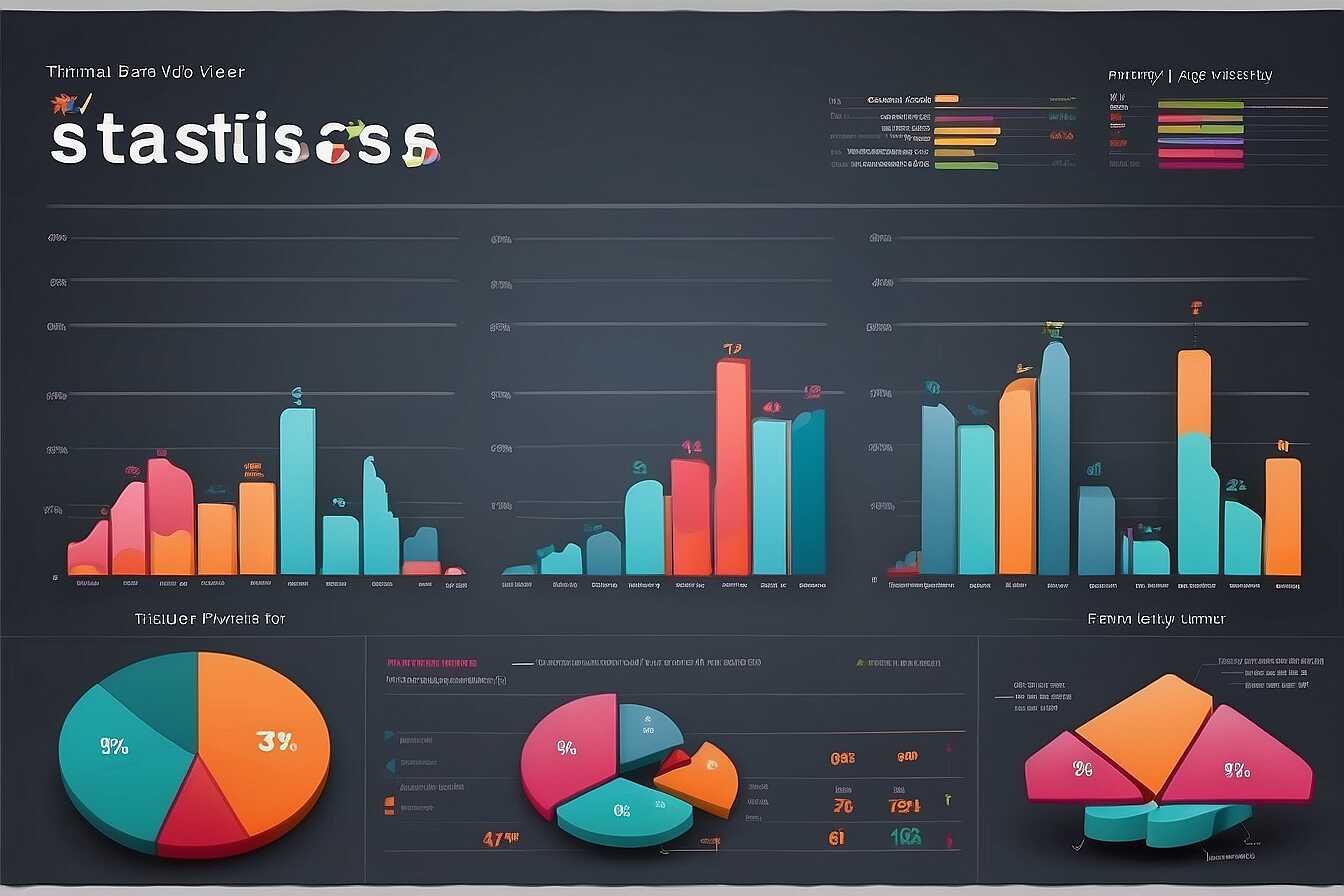Mobile-first indexing is essential for your business website to thrive in today’s digital landscape. This approach prioritizes the mobile version of your site, significantly impacting its visibility and ranking in search results. At Metrics Rule, we understand that optimizing for mobile-first indexing not only boosts SEO but also enhances user engagement, leading to more conversions. By aligning your web strategies with mobile-first indexing, you are setting your business up for greater success amidst evolving digital trends.
Understanding Mobile-First Indexing and Its Importance
Mobile-first indexing means that search engines primarily use the mobile version of a website for indexing and ranking. This shift is crucial because more users now browse the internet on mobile devices than on desktops. For modern web design, optimizing for mobile enhances user experience and helps ensure higher engagement rates. Google and Bing prioritize the mobile versions of sites, leading to improved search rankings when the mobile site is well-structured and efficient. Investing in mobile-first design boosts your SEO efforts, as these engines focus more on how a page performs on mobile devices.
How Search Engines Focus on Mobile-First Indexing
Search engines like Google and Bing utilize advanced algorithms to assess mobile-first indexing. They prioritize sites based on their mobile responsiveness, speed, and overall user experience. In fact, studies show that mobile web traffic has surged by 220% over the past five years, underscoring the need for businesses to optimize their sites accordingly. Utilizing tools such as Google Analytics provides insights into mobile user behavior, enabling website owners to make informed decisions that enhance performance. By designing an easily navigable mobile site, businesses can improve their chances of ranking higher in search results, ensuring they remain competitive in an increasingly mobile-driven online landscape.
Rising Mobile Usage Trends Impacting Businesses
Current statistics indicate that over 60% of all internet traffic now comes from mobile devices. This rise emphasizes the essential need for mobile optimization. User engagement significantly improves when websites are designed to be mobile-friendly. Industries like retail, e-commerce, and travel particularly benefit from enhanced mobile experiences. In fact, studies show that approximately 73% of online transactions are likely to occur on mobile devices by 2025, reflecting the growing importance of catering to mobile users. Businesses that ignore these trends risk losing valuable customers and market share.
Importance of Mobile Optimization in Boosting Engagement
Mobile optimization plays a crucial role in boosting engagement and ensuring that websites perform well across devices. For instance, when sites are optimized for mobile, they load faster, provide better navigation, and enhance user experience. E-commerce platforms that invest in mobile-friendly websites often report increased conversion rates and lower bounce rates. Websites require thorough testing to ensure loading times are optimal and that interactive elements function correctly on mobile devices. By 2025, integrating reliable mobile optimization strategies can help businesses capture a larger share of the mobile transaction market, directly affecting their bottom line.

How Mobile-First Indexing Influences SEO Rankings
Mobile-first indexing is crucial for your website’s SEO rankings. Google now primarily uses the mobile version of content for indexing and ranking. This shift means that if your site isn’t optimized for mobile, you could lose visibility. Factors that influence a site’s mobile optimization include loading speed, user engagement, responsive design, and content relevance. A well-optimized mobile site helps ensure that users have a good experience, leading to higher engagement and lower bounce rates, which, in turn, directly enhance your SEO performance.
Key Factors in Mobile Optimization for Better Rankings
Several key factors can improve your website’s mobile user experience and, consequently, its search visibility. First, site speed is essential; mobile users expect pages to load quickly. Research shows that a delay of just a few seconds can lead to significant bounce rates. Additionally, your site’s design must be responsive and adaptable across various screen sizes. Content should be easy to read without excessive zooming or scrolling. Implementing structured data (JSON-LD) can also enhance your search visibility, helping search engines understand your content better. By focusing on these critical areas, your mobile optimization strategies can deliver better SEO rankings.
Key Numerical Insights on Mobile Usage and Indexing
- Over 50% of global web traffic comes from mobile devices.
- Mobile accounts for about 73% of total e-commerce sales.
- Google uses mobile-first indexing for 90% of new websites.
- Websites that optimize for mobile can see a 20% increase in engagement.
- About 67% of users are more likely to buy from a mobile-friendly website.
- Sites that load in under 3 seconds enjoy lower bounce rates by 32%.
- Mobile users are 5 times more likely to abandon a website that isn’t optimized.

Key Advantages of Implementing Mobile-First Strategies
Implementing mobile-first strategies is essential for enhancing user engagement and increasing conversion rates. Businesses that adopt this approach improve their online presence, ensuring that their websites are reliable and effective on mobile devices. Mobile-first indexing leads to better search engine visibility, helping businesses rank higher on Google and Bing. Results show that sites optimized for mobile viewing can experience conversion rate increases of up to 50%, making it a worthwhile investment.
Enhancing Mobile User Experience with Proven Strategies
Enhancing mobile user experience involves using proven strategies designed to improve site performance and customer satisfaction. A responsive design is essential; it ensures that your website adjusts seamlessly to various screen sizes. Implementing fast-loading pages and easy navigation will greatly enhance how users interact with your site. Additionally, using tools like Google Analytics allows you to gather data on user behavior. This information helps you make informed changes that cater specifically to mobile users, ultimately improving engagement and conversion rates.

Frequent Challenges in Mobile Website Optimization
When optimizing a mobile website, businesses often encounter several common challenges. These include ensuring a seamless user experience, overcoming slow loading times, and handling responsive design issues. To achieve effective mobile-first indexing, focus on optimizing images, reducing redirects, and ensuring that all content is accessible on mobile devices. Relying solely on desktop versions can lead to missed opportunities and lower rankings in search engine results. By 2025, it’s expected that over 75% of users will browse the web primarily on mobile devices, highlighting the need for attention to mobile optimization.
Key Elements for Effective Mobile-First Indexing
To enhance mobile-first indexing, businesses must prioritize several key elements. Start with a robust technical SEO foundation, ensuring that your website loads quickly and is responsive. Utilize mobile-friendly design by implementing flexible layouts and optimizing navigational structures. Focus on user experience, as this plays a critical role in how Google ranks your site. Implement data analysis tools to track mobile performance and gather insights on user behavior. Continuing to test and review these elements will ensure you stay ahead in the ever-evolving mobile landscape. Metrics Rule in Vancouver specializes in leveraging these strategies to improve website performance and SEO.
Benefits of Adopting a Mobile-Centric Approach
- Improved search engine rankings lead to higher visibility.
- Mobile-friendly sites enhance user retention and engagement.
- Better performance on mobile leads to increased conversion rates.
- Consistent user experience across devices boosts customer satisfaction.
- Lower page load times on mobile can reduce bounce rates significantly.
- Access to mobile user data helps tailor marketing strategies effectively.
- Enhanced brand reputation from modern and responsive designs encourages loyalty.

Effective Tools and Techniques for Mobile SEO Success
Businesses can enhance their mobile SEO by using several effective tools and techniques. Some useful tools include Google’s Mobile-Friendly Test, which evaluates a website’s mobile responsiveness, and PageSpeed Insights, which analyzes performance and loading speed. For mobile-first indexing, businesses should focus on technical SEO services, ensuring their site provides quality mobile experiences. Techniques such as creating responsive designs, efficient sitemap management, and utilizing SEO analytics tools can greatly improve indexing results. As we approach 2025, Google considers over 200 factors, including page speed, mobile usability, and structured data, for mobile-first indexing.
Best Practices for Mobile SEO Performance Testing
To ensure optimal mobile SEO performance, it’s wise to implement proven testing practices. Regularly conducting mobile performance testing is essential to identify areas needing improvement. Utilize tools like Google Lighthouse for a comprehensive site audit, which includes checks for accessibility and best practices. Additionally, prioritize user experience by analyzing mobile page load times, as slow speeds can harm engagement rates. Local businesses in Vancouver can enhance their visibility by incorporating schema markup specifically designed for mobile users, improving search rankings and driving more customers.
Emerging Trends in Mobile SEO and Indexing Practices
As we move towards 2025, several emerging trends in mobile SEO will shape how businesses approach their online presence. First, businesses must prepare for increased reliance on AI technologies to enhance user experience and optimize mobile SEO strategies. Specific adaptations involve ensuring that websites are faster and more responsive, as major search engines like Google and Bing continue to update their algorithms to prioritize mobile-first indexing. Statistically, around 54% of global web traffic is generated from mobile devices, underscoring the need to adapt quickly to this shift.
Key Strategies for Adapting to Algorithm Changes
To effectively adapt to the evolving algorithms implemented by search engines, businesses should focus on implementing critical mobile-first optimization strategies. This involves conducting thorough keyword research to identify relevant terms that are more frequently searched on mobile devices. Regular testing of web page performance can help identify bottlenecks that diminish user experience. Additionally, optimizing for schema markup enhances the reliability of mobile content visibility in search results. In an e-commerce context, these improvements lead to better overall performance and user engagement, ultimately impacting conversion rates positively.
Relevant Brands and Their Interaction with Mobile Indexing
- Amazon: Offers a robust mobile app for seamless shopping; however, it may overwhelm beginners.
- eBay: Provides a user-friendly mobile site; some users find navigation tricky on the app.
- Walmart: Efficient mobile interface for shopping; some features are not global, limiting usability.
- Target: Highly rated for mobile shopping experience; not all products available online.
- Shopify: Supports mobile optimization for stores; may require additional fees for advanced features.
- Adobe: Offers tools for optimizing mobile experiences; can be complex for non-tech users.
- Facebook: Connects businesses with mobile audiences effectively; privacy concerns can affect engagement.
Conclusion with Actionable Recommendations for Businesses
Adopting a mobile-first indexing strategy is crucial for businesses aiming to enhance their online visibility. Key benefits include improved SEO performance, better user engagement, and increased reliability of website interactions. As over 58% of online searches now occur on mobile devices, businesses must prioritize mobile-friendly design and content. To effectively implement mobile-first indexing, companies should conduct thorough website optimization, ensuring their sites load quickly and provide a seamless experience across all devices. Regular testing and analysis will help identify areas for improvement, making the mobile experience both efficient and engaging.
Implementing Mobile-First Strategies for Your Business
To successfully implement mobile-first strategies, businesses should focus on several key areas. Start by optimizing website design to enhance performance on mobile devices. Use responsive design techniques to ensure your site adapts to various screen sizes. Conduct regular performance testing to identify any issues impacting mobile user experience. Essential tools like Google Analytics can provide valuable data on how users interact with your site across devices. Additionally, regularly updating content to be mobile-friendly will keep your audience engaged and ensure your business remains competitive in the evolving digital landscape.
